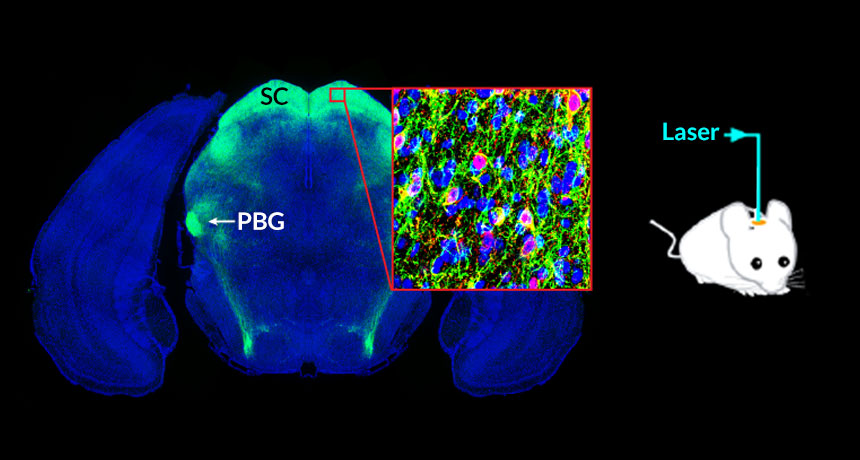One path that fear takes in the brain discovered
Key nerve cells that carry threats from the eyes turn seeing into action, mouse study shows

BUNDLE OF NERVES When parvalbumin-positive neurons (pink in box) nestled in the mouse brain’s superior colliculus (SC) were stimulated by a laser, they carried threatening information to a brain region called the parabigeminal nucleus (PBG). Image shows a slice of the brain from the top of the head to the bottom.
C. Shang et al/Science 2015